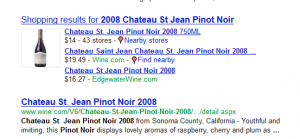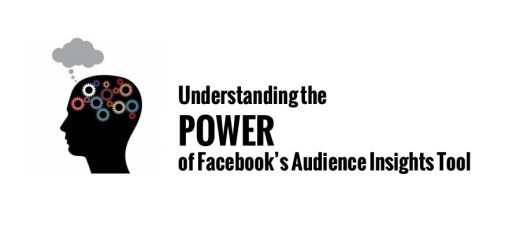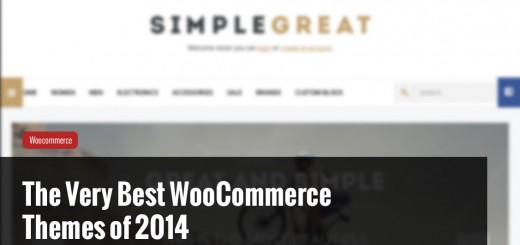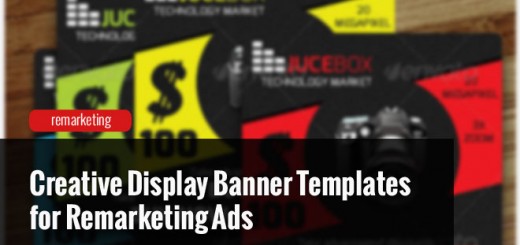Direct-to-consumer sales represent an important sales channel for wineries, with 63% of those surveyed reporting it as their fastest growing source of revenue. What’s interesting is that while the medium to large size wineries enjoy growth in this channel, the smaller boutique wineries with case production under 1,000 have seen a significant drop in DTC sales numbers. Meanwhile, medium to large-sized winery owners report increases in DTC sales even as they raised bottle prices. As someone who seeks to help out wineries of all sizes to boost their online sales, this is a topic that deserves closer examination.
The wine industry doesn’t seem to be adopting digital opportunities as fast as other industries.
As the recession hit in 2008, small wineries raised their bottle prices by 50% at a time when consumers were not spending as much. Coupled with a lack of marketing ability, most boutique wineries simply didn’t have the resources or knowledge to actively promote their wines online. Being able to promote your winery across multiple online channels doesn’t just add to your total online sales, but it also puts your brand in front of more eyes and draws foot traffic into the tasting room. As more people find you online, they’re more likely to visit when planning a vacation, and in turn, buy more wine and sign up for your wine club.
Ways to improve your DTC channel
I find that most smaller wineries simply don’t have the staff to manage their online activity, and find it too daunting to approach themselves. Yet with the growth of online flash sales sites and expanding online marketplaces, small wineries would be foolish to ignore this important channel. If you operate a small winery that needs help boosting your online traffic levels, I can help.
Understand your customers
Modern technology gives us the ability to look at heaps of data and tease meaningful insights about who your customers are, allowing you to modify your sales approach towards higher conversions. However, the wine industry has traditionally been afraid to branch out, clinging to their agricultural roots. As a whole, they’re just slightly ahead of the local 7/11 and dive bar in terms of technological sophistication. We have easy access to powerful and free analytics tools that capture all sorts of user information, making it very easy to gain insights into your most profitable campaigns and channels. We have CRM tools that help you segment and manage your customer relationships – and yet, most winery owners don’t know what CRM means. As stated in the 2011-2012 Wine Industry Report,
Our industry is well behind in adopting what should be rudimentary tools in sales. After our recent survey, we’ve discovered CRM is barely touching our industry with less than 3.5 percent, adopting it in any meaningful way, no matter the case size
The sad fact is that wineries would rather spend $100k on their landscaping than marketing efforts. As their other sales channels begin losing to the online shopping one, wineries will find themselves scrambling to catch up. The ones that take the initiative to adopt new marketing methods will be that much more prepared.
Get with the times
I can’t understand why so many wineries seem to care about selling wine, yet don’t see the light at the end of the tunnel. It’s not like there’s a shortage of money in the industry; the wine market continues to grow at around 5% per year, and the direct-to-consumer portion has seen 12% expansion over last year.
Even senior Google employees support these sorts of insights into the wine industry’s reluctance to adopt new technologies. “Online wine search queries have increased more than 33% in the past 2 years,” announced Google manager, Joe Rosenberg. “In addition, wine searches via mobile phone increased ten times in the same time period.” Google colleague, Danny Navarro added, “We see that consumers are increasingly interested in wine online, but the wine industry doesn’t seem to be adopting digital opportunities as fast as other industries.”
Tip #1 – Establish your web presence
If you operate a winery and don’t have a website, now is the time to get one. If you already have one, make sure that you’re leveraging technology to include a shopping cart, newsletter sign-up, blog, and social networks. Many vendors exist that provide wine industry-specific platforms that provide total online solutions including a website, CRM, business intelligence, analytics, and marketing components.
Tip #2 – Add your wines to marketplaces
I’m amazed at how few wineries I see with products that display in the prominent Google Products search result area. It’s not that hard to compile a spreadsheet with your varieties that you can then upload to the Google Merchant Center. The large wine retailers all have feeds displaying wines, and often these rank above the winery itself when searching for particular varieties.
Tip #3 – Invest in SEM/SEO
You can quickly setup an Adwords account and start advertising your wines and winery for whatever terms you want. If your winery owns vacation rentals, then you should advertise for terms like “Vineyard vacations”. Likewise, you should ensure that your website is optimized for those terms that you’re bidding on, so you can attract organic visits (which you don’t pay per click for). It’s very easy to test the conversions that come from search traffic, which makes it a very easy to increase your ROI.
Tip #4 – Target mobile devices
So many people use their mobile phone to look for wineries when they’re out tasting. If you don’t have a mobile site, chances are they won’t bother waiting for it to load or be able to navigate around the desktop version. A mobile site simply offers a streamlined version of your website, with only the most important pages and functionality available.
Tip #5 – Build your social presence
Most wineries have a Facebook fan page, but there are still a good many that do not. You need to tap into sites like Facebook and Twitter to interact with your customers, and show them your brand has a face and personality. Plus, you can drive traffic to your website and winery. Other “ambient” social apps like Foursquare offer users the ability to check-in at your winery; you should provide special mobile-only discounts or offers to attract these people.
Tip #6 – Create some content
Think of all the ads and money that larger liquor and beer companies spend as they create marketing material. Now think about the comparable efforts that the wine industry spends on the same types of things. Wine transcends so many different markets, and it’s a lifestyle that appeals to so many people. Create videos to post on YouTube, or an infographic that shows the different types of wines and their flavor profiles. Gundlach Bundschu deserves special praise for the Merlot video they recently created, which has so far attracted 30k visits and drives piles of visitors to their website.
Tip #7 – Track your online sales
I mentioned that analytic tools like Google Analytics provide you with valuable data about your website visitors, including who’s buying and where they’re coming from. You must segment your traffic (organic, referring, etc) and identify the sources that bring the highest conversion rates. Set up goals on your website – to track newsletter signups, or stages in the buying process (add to cart, checkout, receipt pages). I have many custom dashboards available that you can use; they tell you everything from detailed information about geographic locations of your visitors, to most popular site content, to the all-important conversions.
Tip #8 – Smart email marketing
For the few wineries that are not building an email marketing list, please start now. Collect emails from visitors to your tasting room and add them to a segmented list. Build a list of your “whales” – the club members who buy the most wine each year, and market special promotions to them. Don’t send too many emails either. You should only send out emails every other week. And please, for the love of God, do not call it an “email blast” which is synonymous with spam. Nobody wants to be blasted by anything.









